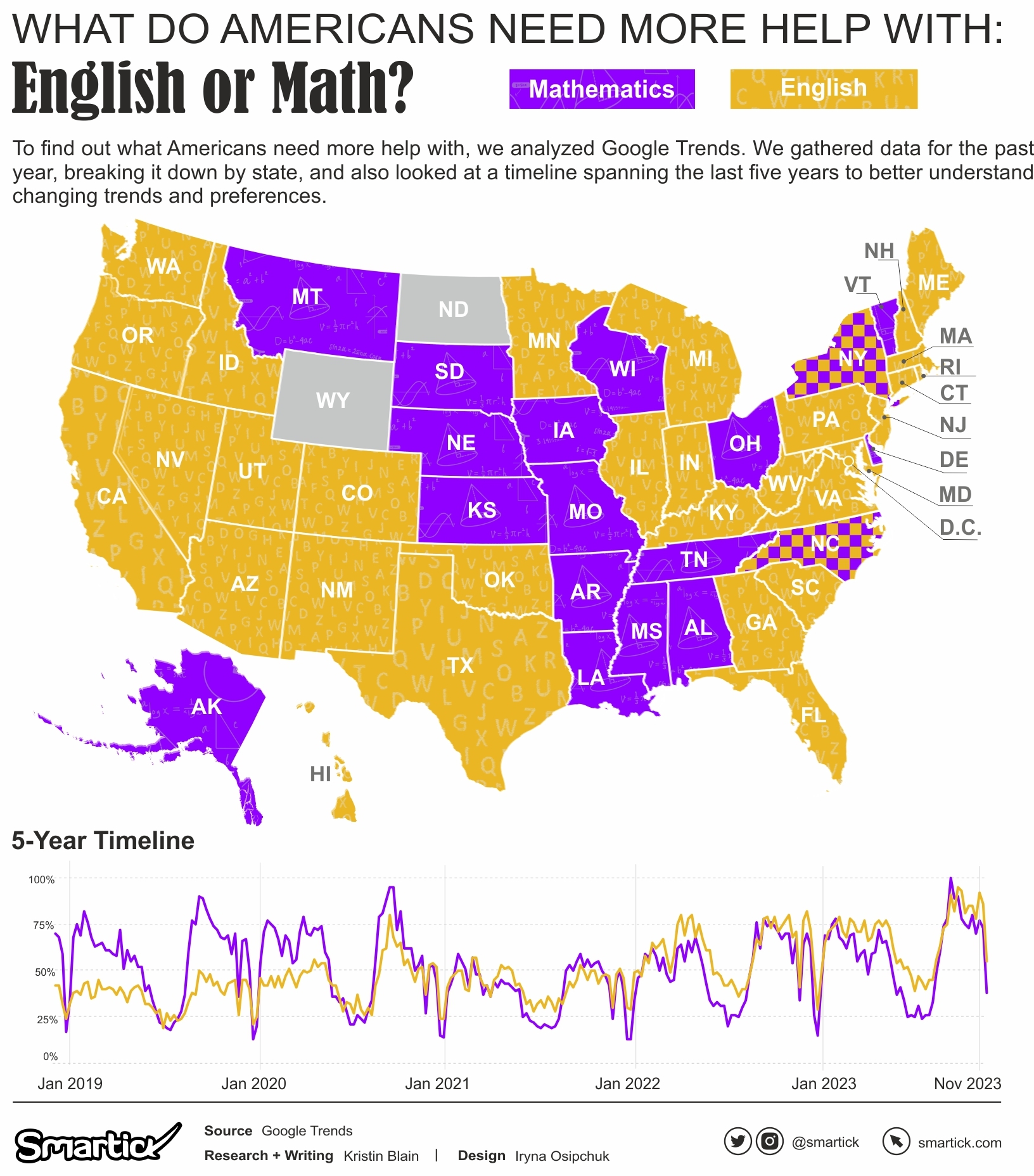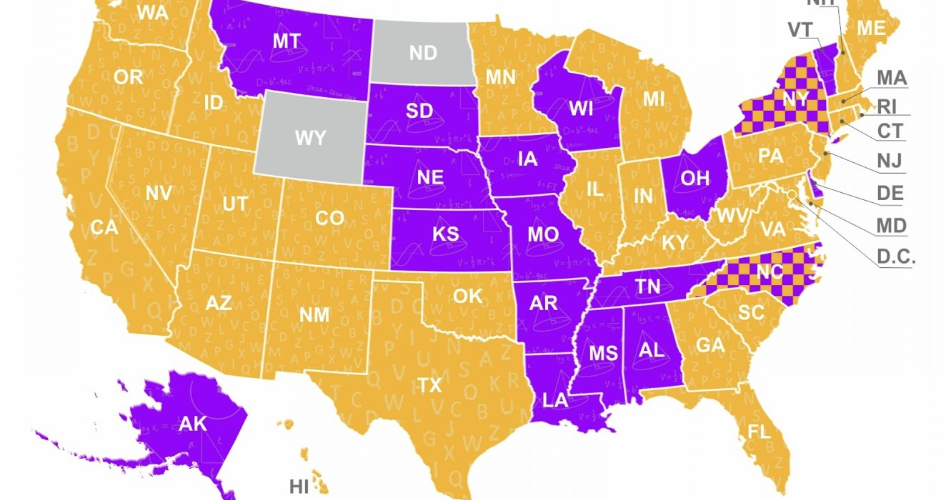
In our fast-paced world, education serves as the bedrock of progress. For Americans, the pursuit of knowledge is an enduring quest, with math and English playing central roles in personal and societal development. To discern the nation’s educational needs, we examined Google Trends data from the past 12 months, concentrating on the most searched keywords for math and English help.

National Trends in “Math and English Help”
As we embark on a five-year analysis of Google Trends data, the pronounced peaks, particularly those recurring in September, beckon us to delve deeper into the intricacies of these seasonal surges.
September Surge: Back-to-School and Beyond
The significant uptick in searches for both math and English assistance during September suggests a confluence of factors central to the academic calendar. The commencement of a new school year typically brings forth a surge in inquiries as students, parents, and educators acclimate to fresh curriculum challenges. The desire for additional support becomes palpable, reflecting the collective need to navigate the complexities of new educational material.
Beyond the initial back-to-school fervor, September marks a critical juncture for assessments, including midterms and standardized tests. The data indicates a heightened commitment to bolstering math and English skills in preparation for these evaluative milestones. This dual emphasis on both subjects suggests a comprehensive approach to academic readiness during a pivotal time in the academic calendar.
The Digital Transition: A Pandemic-Influenced Shift
Notably, the data also reveals shifts influenced by external factors, most prominently seen in the peaks during the COVID-19 pandemic. The reliance on digital learning and increased use of online resources is evident in the patterns, with heightened searches during periods of remote or hybrid learning. These peaks represent a collective adaptation to the evolving educational landscape, underscoring the impact of external forces on the pursuit of knowledge.
By untangling the intricacies of these peaks, we gain a nuanced understanding of the contextual factors shaping educational priorities. This analysis not only illuminates the trends but also empowers educators, policymakers, and learners to navigate these peaks strategically, ensuring targeted support during critical junctures in the academic journey.
State-wise Analysis: Math vs. English Assistance
Turning our attention to the state-specific dynamics, a clear distinction emerges in the educational needs across the United States. Examining the overall trend, we observe that in a considerable number of states, there is a prevalent demand for assistance in mathematics. The reasons behind this trend could be diverse, encompassing curriculum challenges, teaching methodologies, or regional priorities in emphasizing mathematical skills.
Conversely, a substantial number of states showcase a heightened interest in English assistance. The surge in searches related to English implies a collective emphasis on language skills, ranging from reading comprehension to writing proficiency. Understanding the regional nuances in these educational preferences is crucial for tailoring interventions and resources to meet the specific needs of learners.
For a comprehensive view of these trends, we invite you to explore our map, which provides a visual representation of the dominant subject of interest in each state. This map serves as a valuable tool for educators, policymakers, and communities to gain insights into the prevailing educational needs in their respective regions. By acknowledging and addressing these disparities, we can collectively work towards creating a more inclusive and effective educational landscape for all.

